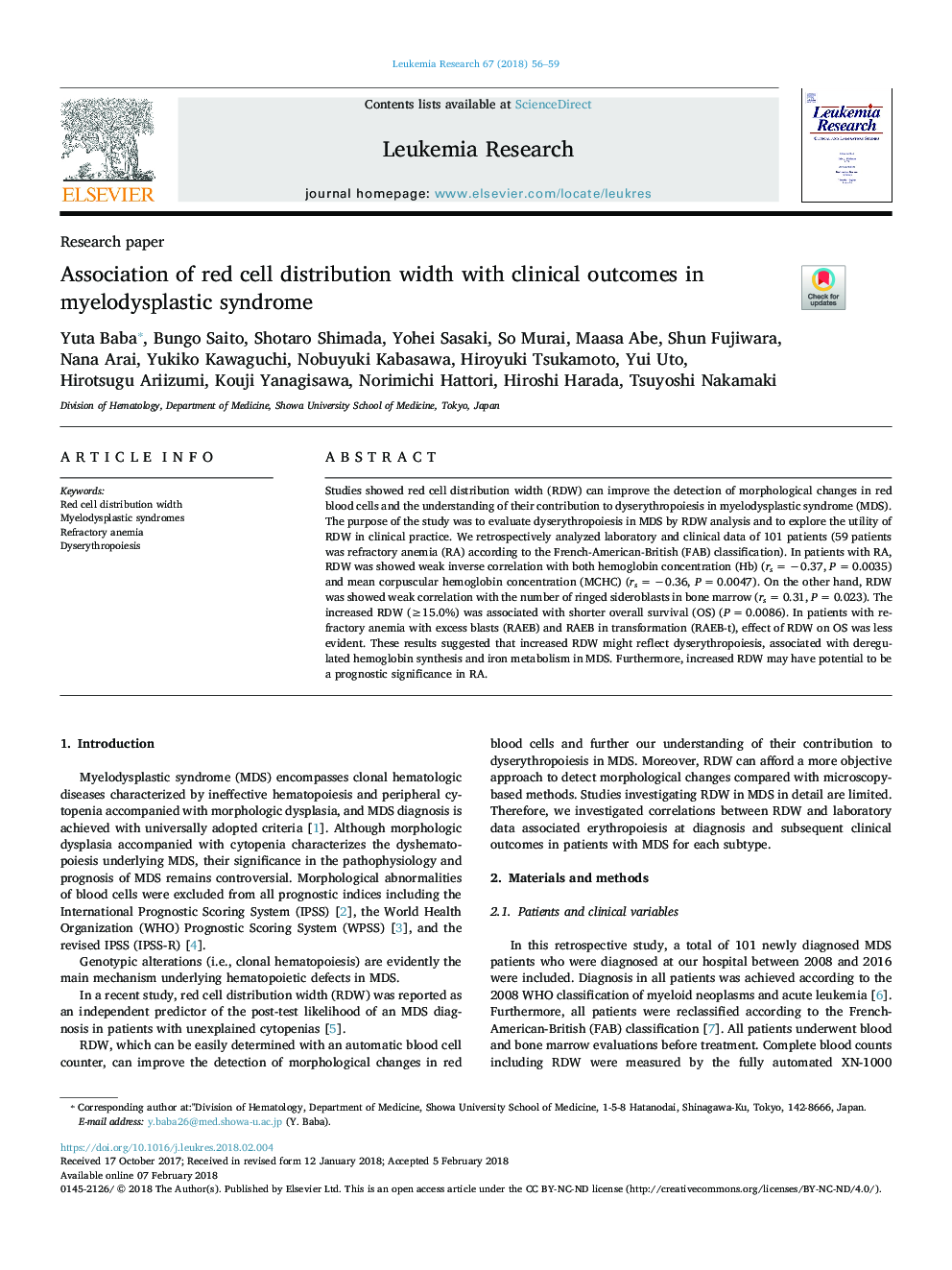| Article ID | Journal | Published Year | Pages | File Type |
|---|---|---|---|---|
| 8453359 | Leukemia Research | 2018 | 4 Pages |
Abstract
Studies showed red cell distribution width (RDW) can improve the detection of morphological changes in red blood cells and the understanding of their contribution to dyserythropoiesis in myelodysplastic syndrome (MDS). The purpose of the study was to evaluate dyserythropoiesis in MDS by RDW analysis and to explore the utility of RDW in clinical practice. We retrospectively analyzed laboratory and clinical data of 101 patients (59 patients was refractory anemia (RA) according to the French-American-British (FAB) classification). In patients with RA, RDW was showed weak inverse correlation with both hemoglobin concentration (Hb) (rsâ¯=â¯â0.37, Pâ¯=â¯0.0035) and mean corpuscular hemoglobin concentration (MCHC) (rsâ¯=â¯â0.36, Pâ¯=â¯0.0047). On the other hand, RDW was showed weak correlation with the number of ringed sideroblasts in bone marrow (rsâ¯=â¯0.31, Pâ¯=â¯0.023). The increased RDW (â¥15.0%) was associated with shorter overall survival (OS) (Pâ¯=â¯0.0086). In patients with refractory anemia with excess blasts (RAEB) and RAEB in transformation (RAEB-t), effect of RDW on OS was less evident. These results suggested that increased RDW might reflect dyserythropoiesis, associated with deregulated hemoglobin synthesis and iron metabolism in MDS. Furthermore, increased RDW may have potential to be a prognostic significance in RA.
Related Topics
Life Sciences
Biochemistry, Genetics and Molecular Biology
Cancer Research
Authors
Yuta Baba, Bungo Saito, Shotaro Shimada, Yohei Sasaki, So Murai, Maasa Abe, Shun Fujiwara, Nana Arai, Yukiko Kawaguchi, Nobuyuki Kabasawa, Hiroyuki Tsukamoto, Yui Uto, Hirotsugu Ariizumi, Kouji Yanagisawa, Norimichi Hattori, Hiroshi Harada,
